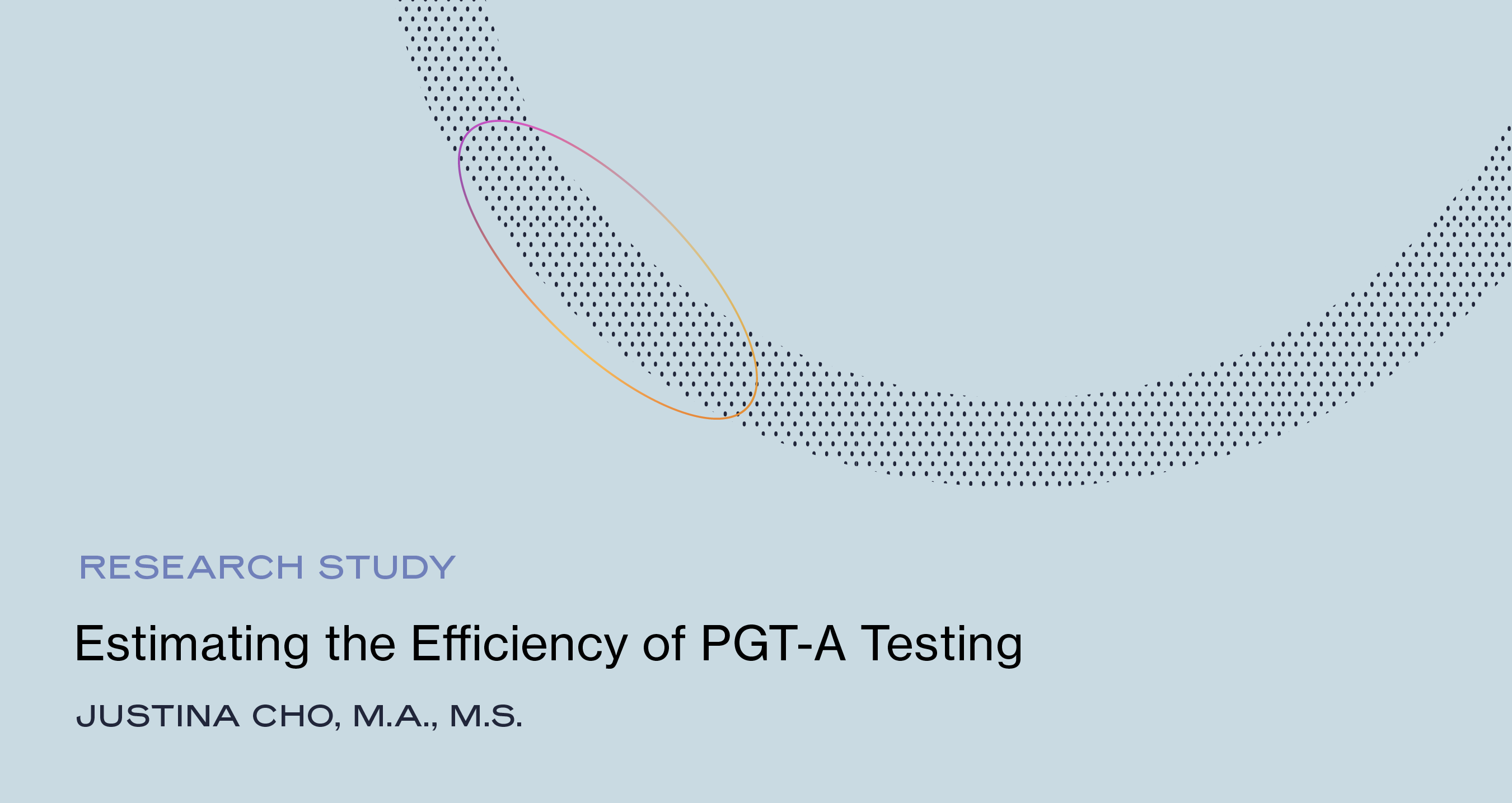How Often Does PGT-A Testing Affect Embryos?

Alife Data Scientist Justina Cho M.A., M.S. presented her research “A Novel Approach for Retrospectively Estimating the Efficiency of PGT-A Testing” at the 2022 American Society for Reproductive Medicine conference this October.
We were glad to get to talk with her about how efficient Preimplantation Genetic Testing (PGT-A) for chromosomal abnormalities during IVF is for different age groups, and the potential risks of this test.
If you’d like to learn more about PGT-A testing and the other forms of PGT testing, check out our blog post “Everything You Need to Know about Preimplantation Genetic Testing (PGT).”
Interview with Alife Data Scientist Justina Cho, M.A., M.S.
What is PGT-A testing and why might someone choose to do it?
PGT-A testing is preimplantation genetic testing for aneuploidy. It is a genetic test performed on embryos to screen for chromosomal abnormalities such as extra or missing chromosomes. Embryos with chromosomal abnormalities, also called aneuploid embryos, often fail to implant or can lead to miscarriage. Genetically normal embryos, also called euploid embryos, are more likely to lead to a successful pregnancy. Patients may choose to use PGT-A to avoid the transfer of an aneuploid embryo.
What are the risks of doing PGT-A testing?
During PGT-A testing, a laser is used to take a small biopsy of an embryo, so there’s a small risk that the embryo will be damaged in the process. PGT-A testing is also not 100% accurate and sometimes a normal embryo may have an abnormal test result, or vice versa.
How does PGT-A testing affect outcomes during IVF?
PGT-A testing reduces the risk of miscarriage and increases the chance of a successful pregnancy and live birth. In theory, it can reduce the number of IVF embryo transfer cycles needed to achieve a live birth.
Why is it important to be able to estimate the efficiency of PGT-A testing?
Research studies have questioned the benefit of PGT-A testing and hypothesized that in some cases, normal embryos are being damaged or discarded. We wanted to use real-world data to estimate the efficiency of PGT-A, to understand what percentage of normal embryos, if any, might be lost as a result of the testing process.
What did your study find?
We found that the estimated loss due to PGT-A testing to be near 0% for younger patient groups and approximately 3% to 16% for older patient groups. This means that testing is very efficient for younger patient groups, and mostly efficient for older patients. This estimated loss of 3-16% could be due to harm from the biopsy procedure or discarding of viable embryos. As a caveat, we should mention that this data came from just a single center in the U.S., and further work is needed to understand whether results would be the same at other clinics.
Recent Articles
Share this
Recent Articles

Learn everything you need to know about IVF
Join the newsletter for IVF education, updates on new research, and early access to Alife products.



